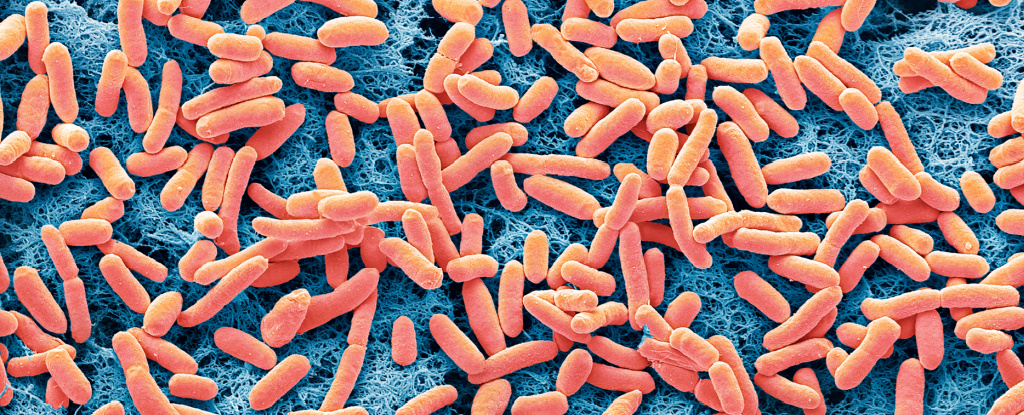Products You May Like
Ever since 1911, when British mycologist Michael Cressé Potter noticed that brewer’s yeast generated electricity, scientists have been trying to harness the power of microbial fuel cells.
But the efficiencies of tiny, budding ‘bioreactors’ have been too low for practical use. What’s more, it turns out microbes can be surprisingly picky in what substrates they digest to create electricity.
Now, a team of researchers from the Swiss Federal Institute of Technology Lausanne (EPFL) has engineered one of the most common species of bacteria, Escherichia coli, to generate electricity from brewery wastewater – and it has surpassed the most recent bioengineered strains.
“Though there are exotic microbes that naturally produce electricity, they can only do so in the presence of specific chemicals,” explains senior author and chemical engineer Ardemis Boghossian, from EPFL.
“E. coli can grow on a wide range of sources, which allowed us to produce electricity in a wide range of environments, including from wastewater.”
To enhance E. coli’s ability to generate electricity, the researchers modified its genome to include instructions for protein complexes found in Shewanella oneidensis, one of the best-known bacterial electricity generators.
S. oneidensis produces a flow of electrons when it reduces metals, an electrical signal that has been used, for example, to detect toxic metals such as arsenic in prototype systems.
By incorporating all components of S. oneidensis’ electricity-generating pathway in E. coli, Mohammed Mouhib, the study’s lead author, Boghossian and colleagues ramped up its electroactivity two-fold compared to previously engineered strains (which only included part of the S. oneidensis pathway).
However, those experiments were done in a single chamber under lab conditions. The real test for any potential technology is whether it can work in industrial settings.
Past research has explored using algae in brewery wastewater treatment. Breweries need to process the water they use to wash grains and flush out tanks before disposing of it because it contains a heady mix of sugars, starches, alcohols, and yeast that could trigger unwelcome microbial blooms if discharged untreated.
So the team tested their E. coli system on a sample of wastewater collected from a local brewery in Lausanne, Switzerland, which the modified bacteria happily gobbled up over 50 hours.
“Our bioengineered electric bacteria were able to flourish exponentially by feeding off this waste,” says Boghossian, whereas S. oneidensis, used as a comparator, wasn’t able to digest the mixed effluent.
This makes the engineered E. coli far more suitable for treating industrial wastewater, even if its electricity-generating potential is still slower than S. oneidensis, the researchers say.
E. coli’s appetite for different chemical substrates also means the engineered bacteria could possibly be adapted to other waste streams and feedstocks.
In any case, the researchers will need to test whether their modified E. coli can process industrial volumes. If so, it could bring about some considerable energy savings.
“Instead of putting energy into the system to process organic waste, we are producing electricity while processing organic waste at the same time – hitting two birds with one stone,” says Boghossian.
The study has been published in Joule.
